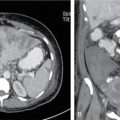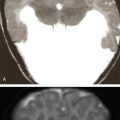Pankaj Tandon, Krishan Kumar Jain, Chander Mohan, Rengarajan Rajagopal RADIATION PROTECTION IN DIAGNOSTIC IMAGING Dr. Krishan Kumar Jain Absorbed dose is defined as the amount of energy absorbed per unit mass and is measured in Gray (Gy), i.e., J/Kg. The energy deposition of 1 J/kg tissue is the equivalent of 1 Gy. There are different types of radiation and all types do not produce the same biological effect; therefore, the term equivalent dose is often used instead of the absorbed dose. The equivalent dose is the product of the absorbed dose and a radiation weighting factor (earlier termed as quality factor) and is expressed in Sieverts (Sv). Because the radiation weighting factor for X-rays and gamma rays is same, i.e., 1.0; thus, 1 Gy is equivalent to 1 Sv in medical imaging. Radiation doses in medical imaging are typically expressed in millisieverts (mSv). In our routine life, we are getting exposed due to small doses of radiation from the natural sources all the time, i.e., from cosmic radiation, rock, building material and by food like banana we eat. Usually, the average estimated dose received per year due to natural background is of the order of 3 millisieverts (mSv) per year. Unless you are exposed to high doses of radiation during cancer treatment at young age, any increase in risk for you developing cancer due to medical radiation appears to be quite low as the effects of radiation damage typically take many years to appear. There are many ways to diagnose ailments in the patient which may involve ionizing radiation used in diagnostic radiology by conventional X-ray, CT scan or by administering radiopharmaceuticals to patients in nuclear medicine. It is always preferable to use non-ionizing radiation like MRI and USG for the desired information required by the referring physician. There is always a risk of developing cancer, if the person is exposed to radiation more than the background level. Moreover, the risk to an individual exposed to ionizing radiation is not the same as it depends upon age, sex and many other parameters. As it is a well-known fact that in children the cells are dividing rapidly, they are more sensitive and also have longer life expectancy; thus, it becomes visible. It is seen that the risk is small in diagnostic imaging rather not treating the diseases. It is always better that there should be awareness amongst public that as and when they are referred for CT scan or any other examination in nuclear medicine, they need to discuss the benefit and risk with the referring physician. The very purpose of using any diagnostic modality is to provide the relevant information to the referring physician so that future mode of treatment can be decided based on the information obtained after the study. It is a proven fact that the there are advantages of using X-ray for getting information as it is a noninvasive technique and has low risk and at the same time provides accurate information instantaneously. Since all the imaging modalities more or less provide the relevant information about the specific diseases, however, it is always preferred to use nonionizing modalities like MRI and USG, w.r.t the other modalities using ionizing radiation, if it can be. During radiation exposure, due to the damage of the cell structure, either stochastic effect takes place or deterministic effect takes place. But the likelihood of stochastic effect increases with the increase of dose received. The evidence available on radiation-induced cancer risk is available from the data available from the atomic bomb survivors. It has been noted that the cancer risk is more prevalent for doses above 100 mSv, which is very unlikely in diagnostic radiology until multiple CT examinations take place as a single CT examination of abdomen is likely to deliver a dose of around 10 mSv. It is also observed that no epidemiological effect is noted at the dose levels below 10 mSv which are usually the doses received in general radiography or nuclear medicine imaging. International Commission on Radiological Protection (ICRP) uses the concept of effective doses to assess the health risk. In order to reduce the radiation dose to the patient, either the alternative modality is to be used or the examination is carried out by imparting less dose to get the desired clinical information. It is always better that clinician explains the radiation risk and benefit of the radiological procedures to the patients who express concern about this issue. It is the mere responsibility of the medical practitioner to perform the scan, if no alternative modality is available to get the desired information. Medical uses of ionizing radiation are amongst the longest established applications of ionizing radiation. According to UNSCEAR 2008, the estimated worldwide annual number of diagnostic and interventional radiological procedures (including dental) was 3.6 billion, the estimated number of nuclear medicine procedures was over 30 million and the estimated number of radiation therapy procedures was over 5 million. The number of such procedures has continued to increase since then. Though, medical use of X-rays for diagnosis and treatment has proven to be immensely beneficial to the society at large, however, unsafe use of X-ray radiation has health risks associated with it, and hence, it is required that proper care is exercised throughout the useful life of the equipment, i.e., from manufacture, supply, installation, operation, maintenance, servicing and ultimately decommissioning. The Atomic Energy (Radiation Protection) Rules, 2004 [AE (RP) R-2004], promulgated under the Atomic Energy Act, 1962, provides the legal framework for the safe handling of radiation generating equipment (in this context – X-ray equipment). The Atomic Energy Regulatory Board (AERB) is constituted by the president of India under Section 27 of the Atomic Energy Act, 1962 (33 of 1962) to carry out certain regulatory and safety functions envisaged under Section 16, 17 and 23 of the Act. According to Rule 16 of Atomic Energy (Radiation Protection) Rules, 2004 (AE (RP) R-2004), the Competent Authority (i.e., Chairman, AERB) may issue safety codes and safety standards, from time to time, prescribing the requirements for radiation installation, sealed sources, radiation generating equipment and equipment containing radioactive sources and transport of radioactive material and the licensee shall ensure compliance with the same. AERB has published Safety Code ‘Radiation Safety in Manufacture, Supply and Use of Medical Diagnostic X-ray Equipment’ (No. AERB/RF-MED/SC-3 (Rev. 2), 2016), issued under Rule 16 of AE (RP) R-2004, which specifies the licensing requirements for manufacturers, suppliers and users for entire lifecycle of diagnostic X-ray equipment from radiological safety view point. A wide range of medical devices are utilized in the society to harness their benefit to mankind. The hazard potential in these devices differs vastly; therefore, prerequisites for license also differ widely. Accordingly, the license is granted in various forms based on hazard associated with the facility/activity. The objective of licensing is to ensure that only such practices are permitted which are justified in terms of their societal and/or individual benefits; radiation protection is duly optimized in the radiation facilities, radiation doses to the personnel in these facilities and to the members of the public in their vicinity do not exceed dose limits prescribed by the Competent Authority and potential for accidental exposures from the facilities remains acceptably low. This involves approval of equipment for radiation applications after necessary design safety checks followed by approval of facility using approved equipment after compliance check of the layout and shielding adequacy etc. Following types of licenses are issued by AERB for diagnostic X-ray equipment: Licensing requirements for facilities engaged in commercial production of diagnostic X-ray equipment: TABLE 1.14.1.1 The facility is required to designate one of its qualified and trained service engineers as RSO, with written approval of the Competent Authority. The qualification requirements for personnel in Medical X-ray Installation are prescribed by the Competent Authority. Licensing requirements for facilities engaged in supply of diagnostic X-ray equipment: The users are required to obtain license for operation of their diagnostic X-ray equipment from the Competent Authority under Rule (3) of AE (RP) R-2004. The Competent Authority issues license from radiological safety view point. Users are required to obtain all other approvals/clearances required under applicable laws from respective statutory authorities. Prerequisites for obtaining license for operation of X-ray equipment: The user is required to install his X-ray equipment in a room complying with following requirements: TABLE 1.14.1.2 Interventional radiology Computed tomography Radiography and Fluoroscopy Radiography (fixed) Dental (OPG) Dental (CBCT) Mammography Radiography (Mobile) Radiography (portable) C-arm O-Arm Dental (intraoral) Dental (hand-held) TABLE 1.14.1.3 AERB developed a web-based electronic licensing system for radiation applications called e-LORA in 2013 for helping users to submit their applications and supporting documents on-line. All types of regulatory approvals and licenses can be obtained through the e-LORA system. The guidelines for submitting applications in e-LORA system are available at AERB website for helping the users. The following are the practical tips for ensuring radiation safety during X-ray imaging. Radiography (Mobile): When radiation passes through the body, majority of radiation get absorbed, some of it get scattered and some of it get transmitted. The X-rays that are transmitted from the patient are used to create the radiographic image. The amount that is absorbed contributes to the patient’s radiation dose. Medical practitioners always use the term effective dose when estimating the risk to the patient whilst using ionizing radiation for diagnosis or treatment of diseases, as the risk takes into account the possible side effects during the diagnosis/treatment later in life. ICRP Report-133 also states that as and when the term effective dose is used; it is to be noted that whether the organ and tissue has received whole body exposure, partial body exposure or heterogeneous exposure which is usually the case in diagnostic radiology, where the beam is collimated only to the organ of choice.
1.14: Occupational hazards in radiology
Radiation risks
Legislation and principles of radiation protection
Legal framework
Atomic energy regulatory board
Licensing activities
Licensing of medical diagnostic X-ray equipment
Sr. No.
Part of the Body
Occupational Worker
Apprentices and Trainees
Members of Public
1
Whole body (effective Dose)
20 mSv in a year averaged over five consecutive years
6 mSv in a year
1 mSv in a year
30 mSv in any year
2
Lens of eye (equivalent Dose)
150 mSv in a year
50 mSv in a year
15 mSv in a year
3
Skin (equivalent Dose)
500 mSv in a year
150 mSv in a year
50 mSv in a year
4
Extremities (equivalent Dose)
500 mSv in a year
150 mSv in a year
50 mSv in a year
Radiological safety officer
Licensing requirements for users of diagnostic X-ray equipment
Sr. No.
Type of Equipment
Radiation Protection Devices Required
1.
2.
3.
4.
5.
6.
7.
Sr. No.
Radiation Protection Devices
Lead Equivalence
1.
1.5 mm lead equivalence
2.
0.5 mm lead equivalence
3.
0.25 mm lead equivalence
4.
0.25 mm lead equivalence
Common regulatory requirements for manufacturer/supplier/user
Electronic licensing of radiation applications
Radiography (fixed) installation
Computed tomography installation
Interventional radiology installation
Mammography installation
Dental imaging
Patient doses in diagnostic imaging
![]()
Stay updated, free articles. Join our Telegram channel

Full access? Get Clinical Tree


Occupational hazards in radiology
1.14.1






